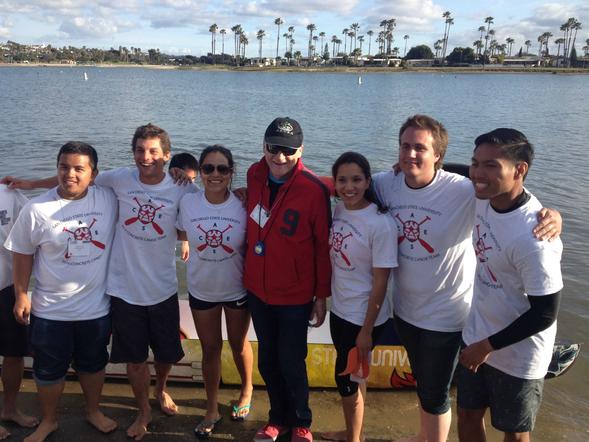Steering Students and Faculty to Success
Civil engineering professor Janusz Supernak, whose work led to the creation of San Diego's HOT lanes, was recognized as an outstanding faculty advisor and educator.

You’re running late for a big meeting and traffic has Interstate 15 snarled from Escondido to downtown San Diego. So you hop on the toll road and, for a few bucks, make the drive in roughly half an hour, no sweat.
The simple, dependable efficacy of I-15’s high-occupancy toll (HOT) lanes is a testament to San Diego State civil engineer Janusz Supernak. The longtime SDSU professor was recognized by the American Society of Civil Engineers (ASCE) as the 2013 Outstanding Civil Engineering Faculty Advisor, as well as by the San Diego County Engineering Council as an Outstanding Engineering Educator.
The prestigious awards acknowledge Supernak’s excellence as both an educator and an academic leader. The San Diego County Engineering Council commended him for “outstanding academic contributions and service to the Engineering Profession and Community,” and this weekend, the ASCE will honor his commitment to advising and championing SDSU’s civil engineering faculty.
“It’s a humbling experience, but also a joyous one,” Supernak said of receiving these awards. “I also take it as symbolic recognition of our program here at San Diego State.”
Originally from Poland, Supernak joined SDSU in 1984, rising to full professor in 1988. Four years later, Supernak became chair of the Department of Civil, Construction and Environmental Engineering. He chaired the department until 2010, when he resumed full-time teaching.
“It has been kind of an exciting transition that has allowed me to get back to my research,” Supernak said.
One of Supernak’s biggest achievements as a researcher has been the application of an economic principle known as dynamic pricing to relieving traffic congestion. His development and implementation of this work led to the San Diego region’s HOT lanes along I-15, which debuted in 1998. Similar projects have since been implemented all over the world.
The idea is simple: Make the charge exacted when entering a toll lane dependent on how many people are using it. As the toll lane becomes busier, it also becomes more expensive to use. This keeps the toll road relatively free of congestion, even during rush hour.
“We were first in the world to try this dynamic pricing model,” Supernak said. “We proved that the concept works very well.”
Early critics wondered whether the HOT lanes would be “Lexus lanes,” allowing those who can afford the added expense to whiz by the masses, but research into drivers who use the lanes doesn’t bear out those worries. Relative wealth seems to factor little into whether someone decides to use the HOT lanes, Supernak said. Instead, it’s primarily utilized by those who really need to get somewhere quickly.
He and his graduate students continue to study the effects of the HOT lanes, providing fodder for many of their research projects.
Supernak’s dedication to his students is another reason he was happy to leave his administrative role behind and get back into the classroom. But a lot has changed since he first began teaching at SDSU 30 years ago.
“Teaching methods have certainly evolved,” he said. “Now, my teaching is as interactive as possible, which reflects how engineering has changed as a field. Everything is teamwork these days. If you have a broken bridge, there’s not just one person who fixes that bridge.”
The makeup of budding engineers in his classroom has changed, too.
“Diversity, fortunately, is going in the right direction,” he said, noting that women especially are succeeding more than ever in civil engineering at SDSU.
In addition to his work in the classroom, Supernak is passionate about helping students bring their work out into the world. For the past 22 years, he has served as an advisor to students traveling to ASCE conferences across the country to present their research and design plans. At these conferences, he said he notices students usually blossom into true professionals, ready to make an impact in their neighborhoods and cities.
“My reward is seeing their leadership skills take root and develop,” he said.



